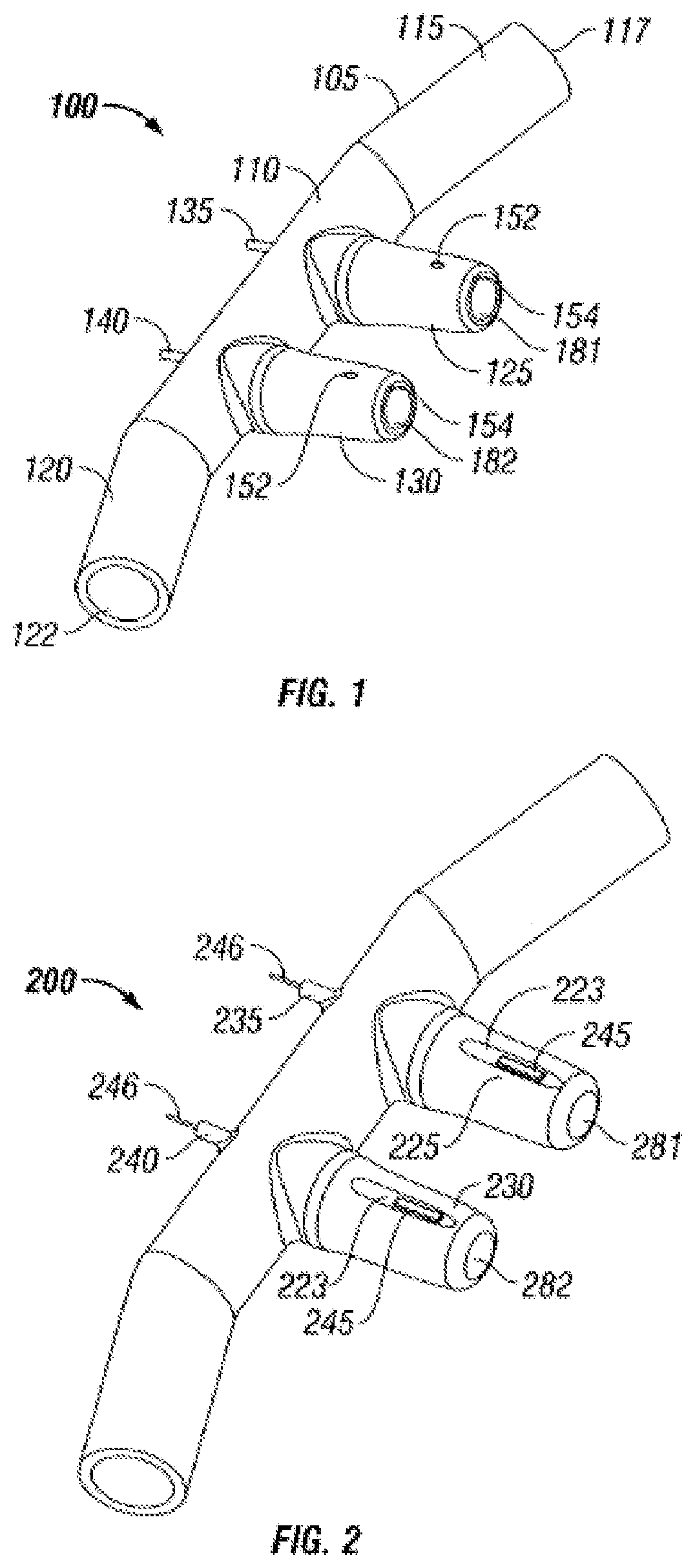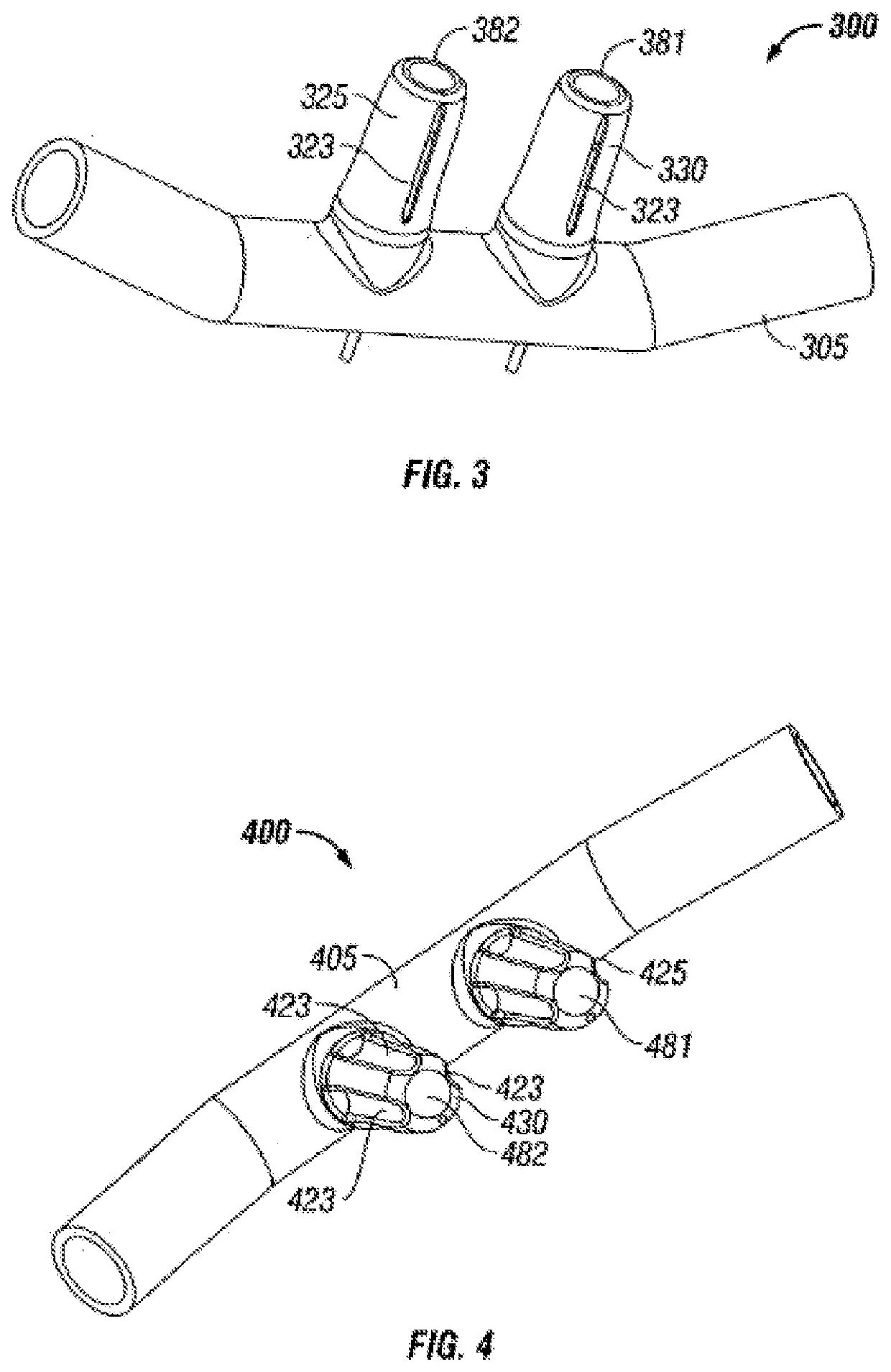High flow therapy device utilizing a non-sealing respiratory interface and related methods
a technology of respiratory interface and high flow therapy, which is applied in the field of high flow therapy device utilizing a non-sealing respiratory interface, can solve the problems of provoking bronchospasm, limited treatment of certain types of nasal cannula, and detrimental to the health of users, so as to minimize the infection of the respiratory tract of the patien
- Summary
- Abstract
- Description
- Claims
- Application Information
AI Technical Summary
Benefits of technology
Problems solved by technology
Method used
Image
Examples
Embodiment Construction
[0055]The present inventions now will be described with reference to the accompanying drawings, in which some, but not all embodiments of the inventions are shown. Indeed, these inventions may be embodied in many different forms and should not be construed as limited to the embodiments set forth herein. Rather, these embodiments are provided so that this disclosure will satisfy applicable legal requirements. Like numbers refer to like elements throughout. For example, elements 130, 230, 330, 430, 530, 830, and 930 are all nasal inserts according to various embodiments of the invention.
[0056]Overview of Functionality
[0057]Nasal cannula according to various embodiments of the invention may be configured to deliver high-flow therapeutic gases to a patient's upper airway through the patient's nose. Such gases may include, for example, air, humidity, oxygen, therapeutic gases or a mixture of these, and may be heated or unheated. In particular embodiments of the invention, the cannula may...
PUM
 Login to View More
Login to View More Abstract
Description
Claims
Application Information
 Login to View More
Login to View More - R&D
- Intellectual Property
- Life Sciences
- Materials
- Tech Scout
- Unparalleled Data Quality
- Higher Quality Content
- 60% Fewer Hallucinations
Browse by: Latest US Patents, China's latest patents, Technical Efficacy Thesaurus, Application Domain, Technology Topic, Popular Technical Reports.
© 2025 PatSnap. All rights reserved.Legal|Privacy policy|Modern Slavery Act Transparency Statement|Sitemap|About US| Contact US: help@patsnap.com



